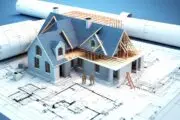
For die-hard sports fans, there may be no better place to live than a home that’s near their favorite team’s shiny new stadium. But even those who couldn’t care less about box scores, batting averages or hat tricks might want to start looking into those properties, if only as investments.
When a stadium is built in a neighbourhood, it can increase the values of surrounding residential properties, a recent Real Estate Investment Network (REIN) report suggests.
“Homes in neighbourhoods close to new stadium builds (or proposed stadium builds), on average, have premiums ranging between 3% and 15%,” the report stated.
The Impact of Stadium Construction on Real Estate Values report draws on data from 13 peer-reviewed academic studies from around the world, all of which controlled for the effects of inflation and transit improvements, another property-value booster. The studies took place between 2004 and 2014, and examined real estate values around stadiums, with a particular focus on stadiums constructed in the last 20 years.
Multiple factors determine how much of a premium a home near a stadium, used in the report as a catch-all term covering large-scale sports facilities from hockey arenas to cycling tracks, will command: the type of housing, parking accessibility, and a home’s proximity to the facility are a few.
“If you look at most of the studies that were done, they see the biggest price increase within one kilometre,” Melanie Reuter, director of research at the Real Estate Investment Network, pointed out. “That dissipates out to beyond four or five kilometres.” Within a five kilometre radius, housing values climb 1.75 per cent for every 10 per cent decrease in distance from a major sports centre, according to the 28-page report.
Reuter said the network looked into the topic because of the “new stadiums popping up across the country,” such as Hamilton’s Tim Horton’s Field, which opened in 2014, and the 20,000-seat Rogers Place arena in Edmonton, slated to open next autumn in the city’s new Ice District. “We wanted to see, well, how is this going to impact real-estate investors,” said Reuter.
One way stadiums help increase property values is through the new businesses that they attract to the area, particularly when a stadium is located in a less developed suburban area, said Reuter.
“Often, when a stadium or arena comes, there’s other services that come with it,” she explained. “So a restaurant could pop up and other things that even people who aren’t interested in what’s going on in the arena can benefit from,” she added.
Morgan Browne, partner at Oakwyn Realty Vancouver, has witnessed this ripple effect first hand in her real estate career of about eight years. Browne said that since BC Place, home of the CFL’s BC Lions, was renovated from 2009-2011, per square footage prices in the vicinity have increased, partly due to development spurred by the project. “With the influx of amenities, the more people are drawn to the area,” she said.

However, Jay McInnis, a Vancouver realtor with Macdonald Realty, finds homes near stadiums are a tougher sell, in spite of the amenities that may come with them. “Buyers that I have spoken to, the vast majority think it’s a negative,” said McInnis. He cited noise and “how busy it gets during game nights” as reasons.
McInnis’ observations are reflected in the report, which shows that stadiums don’t always bolster values. For instance, researchers thought two Berlin facilities close in size and architectural quality, the Velodrom and Max Schmeling Arena, would have similar positive impacts on nearby-property values. They did not.
There wasn’t any “significant impact” on the values of houses within one kilometre of the Max Schmeling site five years after its completion, yet homes within that same distance of the Velodrom increased in value by 7.5 per cent during over the same period of time. As it turns out, parking capacity wasn’t increased around the Max-Schmeling site. “Traffic congestion following unrealistic assumptions about visitors’ mode of travel prove to be an obvious explanation to the decrease in value of surrounding homes,” the report stated.
Reuter said, “It was really interesting to see that not only was parking an important factor, it would negatively impact the real estate values around the arena if there wasn’t enough.”
Of note, researchers also discovered Max-Schmeling Arena was host to a pair of teams with large fanbases. “Noise and incivilities could contribute to the findings and limit the price appreciation.”
Taxes related to the construction of a new stadium can drag down property values, too, noted Reuter. This was the case in Dallas, when a new venue was proposed for the Cowboys, the city’s NFL team.
Following the announcement of a possible stadium in Dallas Fair Park, nearby property values shot up. But in Dallas County, which would have had to foot the bill in the form of higher property taxes, the opposite occurred.
When the proposal was kiboshed, the value of homes near the formerly proposed site declined, while Dallas County home values went back up.
“So they wanted it, they just didn’t want to pay for it,” says Reuter of such cases.






